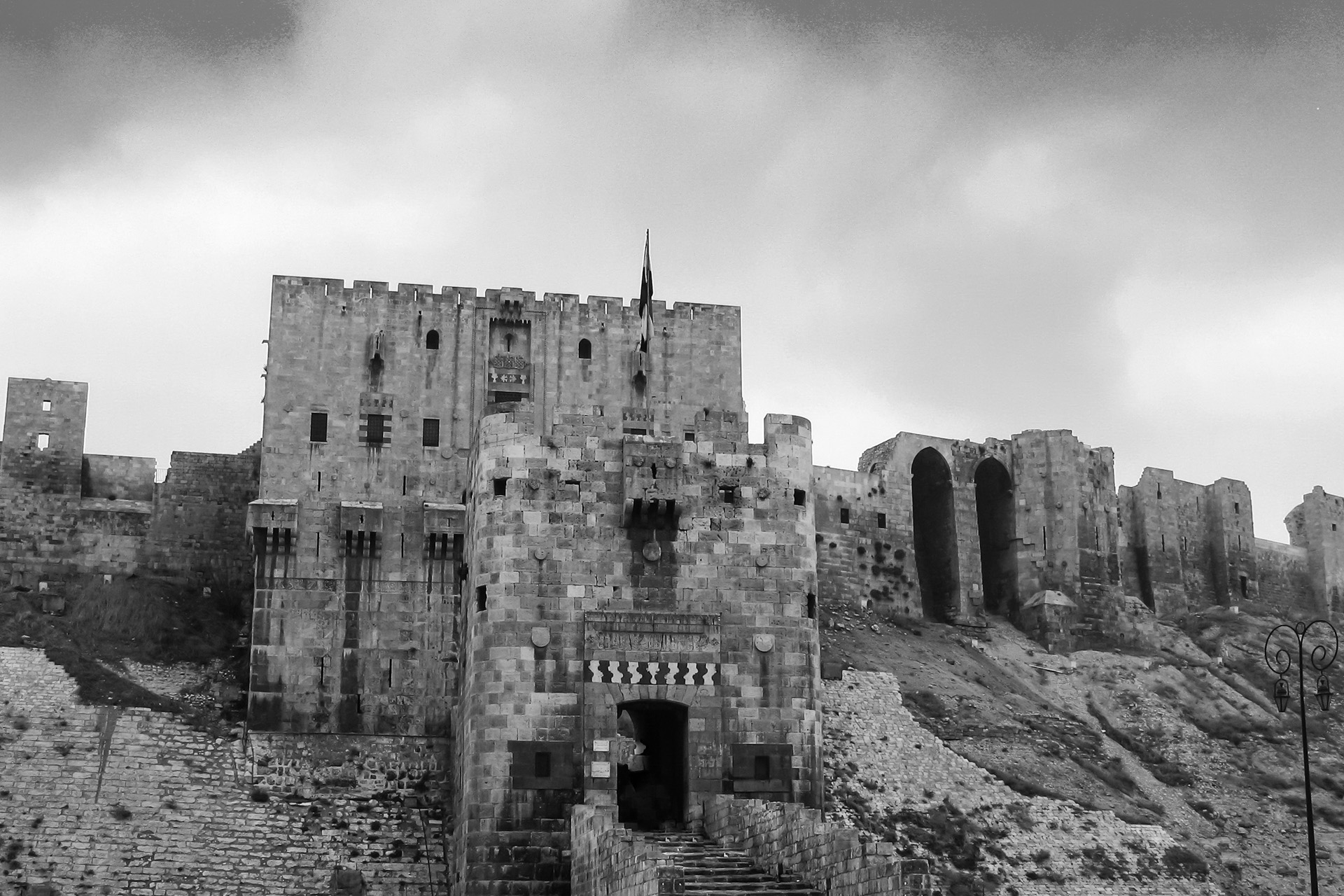The earthquake that struck the city of Aleppo in Syria in 1138 is considered the fourth most dangerous earthquake that struck the globe in history, and the third deadliest and destructive. Recent studies have estimated its intensity at 8.5 degrees on the Richter scale.
Aleppo city
Aleppo is a Syrian city, one of the oldest inhabited areas in history. Its history dates back to about 7,000 years. It is located in a strategic area that represents a major link point between East and West.
It is located in the far north of Syria, close to the Turkish border, and about 355 km from the capital, Damascus.
Geologically, the city extends along the northern part of the Dead Sea fault, which represents a natural rift separating the Arab tectonic plate and the African tectonic plate from the layers of the earth's crust. It is one of the most dynamic seismic faults and generates earthquakes.
Photo showing the Citadel of Aleppo and its surroundings in 1898 (Getty Images)
History of the Great Earthquake
On October 11, 1138 AD, a strong earthquake struck the city of Aleppo, leaving tens of thousands of people dead and leaving great destructive effects in and around the city.
This earthquake is the largest and most violent among a series of violent earthquakes that struck the regions of northern Syria and the Turkish city of Urfa from October 1138 AD until June 1139 AD.
It was followed by another, more violent series that started in September 1156 AD and ended in May 1159 AD, and struck the northwest of the country, northern Lebanon and the Antakya region (southern Turkey).
earthquake description
According to recent studies, the intensity of the earthquake was estimated at 8.5 on the Richter scale, and it was accompanied by a tsunami in the Mediterranean.
The Great Aleppo earthquake was preceded by an aftershock on the 10th of October, and was followed by 5 violent aftershocks, according to the Damascene historian Ibn al-Qalansi, who witnessed the accident, and confirmed that it was difficult to distinguish between the aftershocks and the great earthquake, due to their large number and their succession.
The Great Aleppo Earthquake was classified by the US Geological Survey as the fourth most dangerous earthquake to hit the Earth, and the third most violent, bloody and destructive earthquake, after two earthquakes that struck China, the Shaanxi earthquake in 1556 AD and Tangshan in 1976 AD.
The Great Aleppo earthquake is considered a tectonic earthquake;
Due to the destructive damage it has caused, and tectonic earthquakes arise as a result of the relative movement of the continental plates that make up the earth’s crust, when they move away and approach each other, which causes pressure and tension stresses on each other, and the accumulation of internal stresses begins in the layers of rocks located on the boundaries of the moving plates ( cracks).
When the values of the accumulated stresses exceed the maximum values that the rocks withstand, cracks and fractures occur in the rock layers to release a huge amount of energy that is transmitted in the form of seismic waves in all directions.
Bab Antioch in 1844 is located in the middle of the western wall of the old city of Aleppo and is the main exit leading to the city of Antioch (Getty Images)
Damage
The earthquake claimed the lives of more than 230,000 victims, caused the collapse of the eastern and western walls of the great Aleppo Citadel, and destroyed large parts of the city, as its homes collapsed and rocks blocked its roads and streets, causing residents to be trapped and unable to escape.
Towns around the city were damaged, including: Azrab, Baza’a, Tal Khaled, and Tal Ammar, and a number of small towns surrounding Aleppo were reduced to rubble.
The residents of the city of Damascus - about 350 km to the south - felt the main earthquake and the aftershocks that followed.
Despite the damage caused by the earthquake, the city of Aleppo is considered the least affected, according to Ibn al-Qalansi, due to the preemptive earthquake that struck the city the previous day, which prompted thousands of residents to leave and evacuate the city.
The Syrian city of Harem is one of the areas most affected by the great earthquake, as it destroyed the citadel built by the Crusaders there and brought down its walls, causing the death of 600 of its guards. It also destroyed the city’s church, its walls collapsed, and the Muslim fortress in Atarib was also destroyed.

